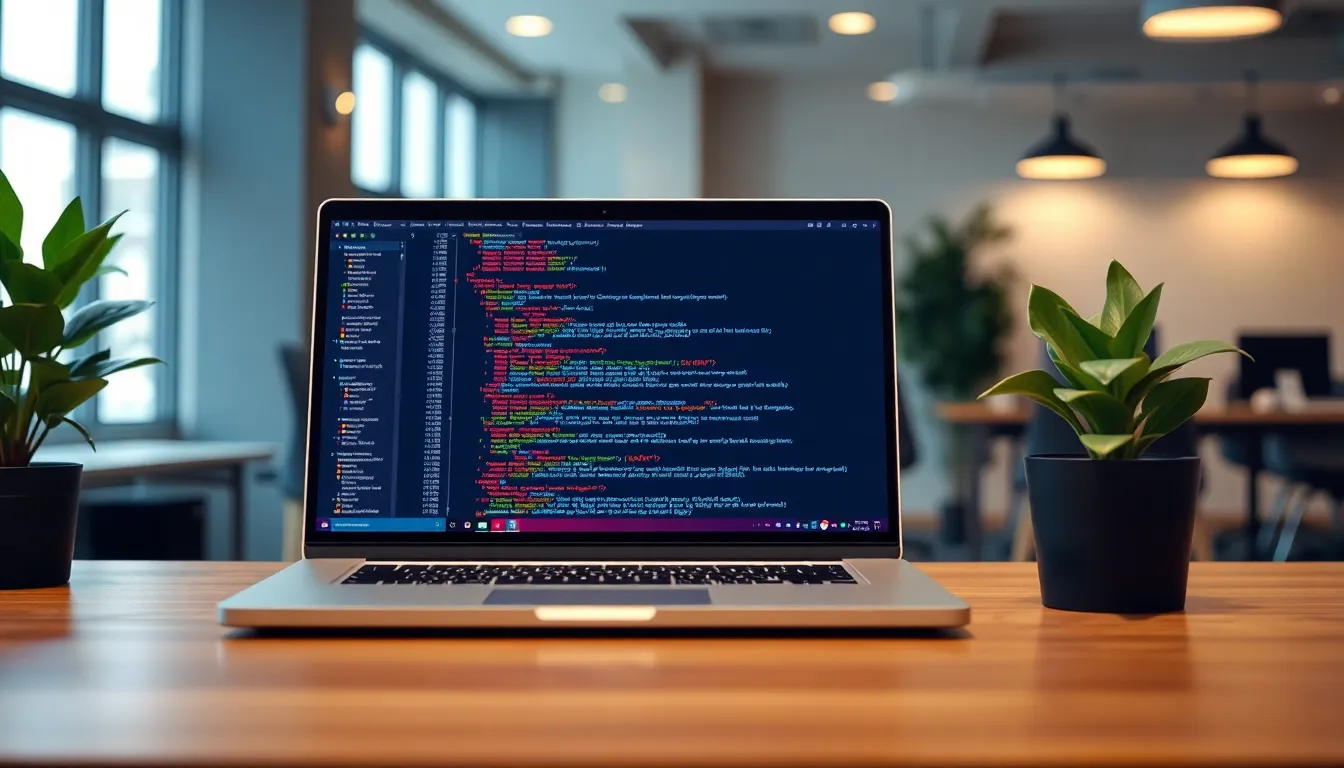Table of Contents
ToggleIn the wild world of coding, formatting can feel like trying to herd cats—chaotic and often frustrating. Enter Prettier, the superhero of code formatting that swoops in to save developers from the clutches of inconsistent styles. With its ability to automatically format code, Prettier ensures that every line looks sharp and tidy, making collaboration smoother than a freshly waxed surfboard.
Overview of Prettier
Prettier serves as a powerful formatting tool aimed at enhancing code readability and consistency. Developers benefit from its ability to streamline the formatting process, making collaboration easier across teams.
What Is Prettier?
Prettier functions as an opinionated code formatter that automates formatting decisions. This tool supports various programming languages and integrates seamlessly with popular editors like VSCode and Atom. Developers benefit from its consistent application style, ensuring uniform output regardless of individual preferences. Organizations find value in its capability to enforce specific coding styles, leading to fewer disputes over formatting.
Key Features of Prettier
Prettier offers several key features tailored to improve development workflows. Automatic formatting occurs on save, which saves time and minimizes manual adjustments. Configuration options include setting line lengths and choosing tab widths, allowing teams to align with project-specific standards. Integrations with Git hooks ensure that all code remains consistently formatted before merges. Additionally, its extensive language support accommodates diverse project needs, catering to JavaScript, TypeScript, HTML, CSS, and more.
Benefits of Code Formatting with Prettier

Prettier offers numerous benefits for developers, making code formatting much more efficient. Organizations that adopt this tool experience improvements in consistency and readability.
Consistency Across Projects
Consistency in coding standards matters. Prettier standardizes code formatting across various programming languages, ensuring that all developers follow the same rules regardless of individual preferences. This uniformity reduces friction during teamwork and enhances maintainability. When team members contribute to a project, Prettier enforces the same formatting rules, eliminating discrepancies. Using Prettier, organizations no longer face debates over style preferences, as its opinionated approach guarantees a cohesive codebase. Consistent formatting not only streamlines collaboration but also simplifies onboarding for new developers. They quickly adapt to existing projects when coding styles remain uniform.
Enhanced Readability
Enhanced readability boosts productivity within development teams. Prettier simplifies complex code structures by enforcing consistent indentation and spacing. Clean formatting ensures developers can easily scan and understand code, reducing the time spent deciphering logic. With improved readability, maintaining and debugging code becomes more efficient. Prettier’s support for various programming languages means that readability benefits apply across multiple environments. Developers instantly recognize patterns, increasing collaboration and reducing miscommunication. By integrating Prettier into the development workflow, teams experience a significant boost in overall code comprehension, thereby enhancing overall project success.
How to Set Up Prettier
Setting up Prettier involves straightforward steps that ensure optimal functionality within your development environment. Following the installation and configuration processes allows for effective code formatting.
Installation Steps
To install Prettier globally, use the command npm install -g prettier. This command facilitates access across various projects, enhancing flexibility. For project-specific installation, navigate to your project directory and run npm install --save-dev prettier. This action includes Prettier as a development dependency. After installation, confirm that Prettier is functioning properly by executing prettier --version in your terminal. The version number should display, indicating a successful setup.
Configuration Options
Configuring Prettier provides customization to meet project needs. Options include setting line width through the printWidth setting, which defaults to 80 characters. Custom tab widths can be specified using the tabWidth option, typically set to 2 spaces for consistency. Developers can enable or disable semicolons with the semi option, deciding the final styling of their code. To organize settings, create a .prettierrc file in the project root directory, allowing for clearer management of formatting preferences.
Using Prettier in Different Environments
Prettier adapts to various development environments, enhancing workflow efficiency and ensuring consistent code formatting.
Prettier with VS Code
Integrating Prettier with Visual Studio Code streamlines the development process. Users can install the Prettier extension directly from the marketplace, facilitating quick setup. After installation, enabling format on save ensures automatic code formatting with each file save. Customization options are available in settings, allowing developers to adjust preferences like tab width and single or double quotes. The integration significantly enhances productivity, as consistent code formatting becomes automatic, minimizing manual adjustments.
Integrating Prettier with Build Tools
Prettier works seamlessly with build tools such as Webpack, Gulp, and Grunt. Configuration in these tools allows automatic formatting during the build process, ensuring code consistency before deployment. Developers can set up scripts that execute Prettier commands, enforcing code style across team projects. Adding Prettier to a CI/CD pipeline guarantees that only properly formatted code reaches production, reducing potential issues. By integrating Prettier with these tools, teams enhance automation, streamline workflows, and maintain high coding standards.
Best Practices for Code Formatting
Consistency in code formatting promotes readability and maintainability across development teams. Adopting best practices with Prettier can significantly enhance workflows.
Common Formatting Rules
Indentation levels must be uniform throughout the codebase. Using two spaces or four spaces consistently can prevent confusion. New lines should follow closing braces for clarity. Statements should be wrapped with a single line unless they exceed the set line width. This approach enhances the readability of blocks of code. Additionally, aligning properties and methods can improve overall organization. Avoid placing semicolons where they’re unnecessary but be aware of personal or team preferences. Regular enforcement of these rules makes the codebase easier to navigate.
Customizing Prettier Settings
Customizing Prettier settings allows developers to fine-tune formatting according to specific project needs. Configuration options like line width can be adjusted in the .prettierrc file, ensuring preferences align with team standards. Tab widths can also be modified based on the programming language or project requirements. Developers can enable or disable semicolons throughout the code. Managing trailing commas enhances the organization of addition or removal within arrays or objects. Effective customization ensures Prettier adheres to the best practices of each project while providing flexibility for individual coding styles.
Conclusion
Adopting Prettier transforms the coding experience for developers. By automating code formatting it not only enhances readability but also fosters collaboration within teams. The tool’s ability to enforce consistent coding styles minimizes disputes and streamlines onboarding for new members.
With easy integration into popular editors and build tools Prettier adapts to various development environments seamlessly. Its customizable settings allow teams to tailor formatting rules to their specific needs while maintaining best practices.
Ultimately embracing Prettier leads to improved code comprehension and project success. By prioritizing consistency and readability developers can focus on what truly matters—building great software.




